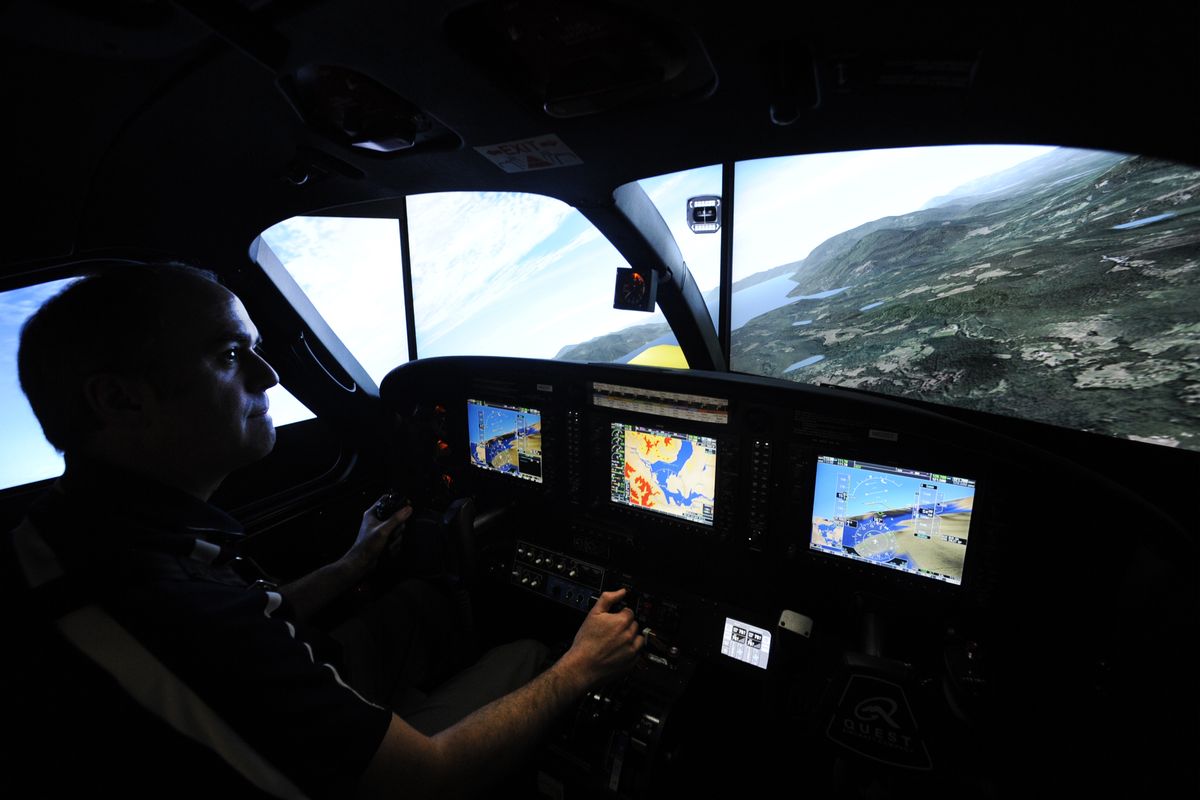Turbine Center upgrades flight skills for versatile new aircraft

When Ken Smoll talks to students about airplane safety, he’s preaching to the choir. The people in his classroom at Spokane Turbine Center are mostly veteran pilots or mechanics who work for missionary or humanitarian groups around the world.
They know nearly every incident in which mission pilots and passengers have died in crashes on takeoff or in unusual storms.
“You’re operating, where most of you fly, in higher-risk conditions than people deal with in this country,” Smoll tells them.
So motivation is never a problem at STC’s office near Felts Field, where Smoll is director of training. Along with five other STC workers, he leads three-week courses to train pilots and mechanics in using the Quest Kodiak, an aircraft custom-designed for flying in remote corners of the planet.
Smoll, a former mission pilot in Kenya, joined the STC last fall when it opened. The center was sparked by interest among church and humanitarian groups in upgrading from older aircraft to the next-generation design of the Kodiak, developed by Sandpoint-based Quest Aircraft Co.
The Kodiak uses jet fuel, which is more readily available than standard aviation fuel. Its turboprop engine and wing design give it maneuverability for short takeoffs and landings.
Paul Schaller, CEO of Quest Aircraft, said about a dozen Kodiaks have been sold so far to mission groups. The plane costs about $1.5 million for a basic configuration.The company is producing two a month, with an order backlog of more than 40 planes, he said.
Using a million-dollar simulator and other training tools, Smoll and other STC staff make sure those taking the course know exactly what the Kodiak can and can’t do.
“We’ve designed this course by asking the mission groups what they needed,” said Jeff Turcotte, STC’s executive director. The first thing on the want list was a fully equipped flight simulator.
Quest provided Turcotte with an exact replica of the Kodiak cockpit; Fidelity Flight Simulation Inc., of Pennsylvania, built the high-powered software that gives the simulator the ability to “fly” anywhere and to duplicate any condition, from snowstorm to engine failure.
Turcotte said he got the call to start the turbine center in 2007 from the directors of Moody Aviation, a branch of Moody Bible Institute, which trains pilots for mission aviation across the globe.
In 2003 Moody Aviation moved operations from Tennessee to Felts Field in Spokane. It continues offering courses in primary flight instruction and engine maintenance.
“Moody provides its students with primary flight training. We take their graduates to advanced training on the turboprop engine used in the Kodiak,” Turcotte said.
The nonprofit center’s annual budget of roughly $750,000 is covered entirely by fundraising and contributions from a variety of mission groups across the country, Turcotte said. The Kodiak program costs $25 an hour, with the mission groups covering that tuition.
Pilots and mechanics in the program are involved in a wide range of religious and humanitarian missions, including famine, disaster and medical relief.
Over the past month four people have been taking the course. Two have finished and returned to work assignments in Indonesia. Two others, Lyle Reffey and Jon Mork, will complete training this week, then return to Papua New Guinea.
Mork, who’s 50, said learning the Kodiak’s high-tech Garmin flight information system was his biggest challenge.
A pilot since the early 1980s, Mork said he’s used to looking at round gauges with needles telling him airspeed and other information.
“The Garmin uses flat-panel displays, and it gives all the information in the form of vertical tapes and trend vectors,” he said.
“It’s new technology, so you have to learn to read it a different way.”